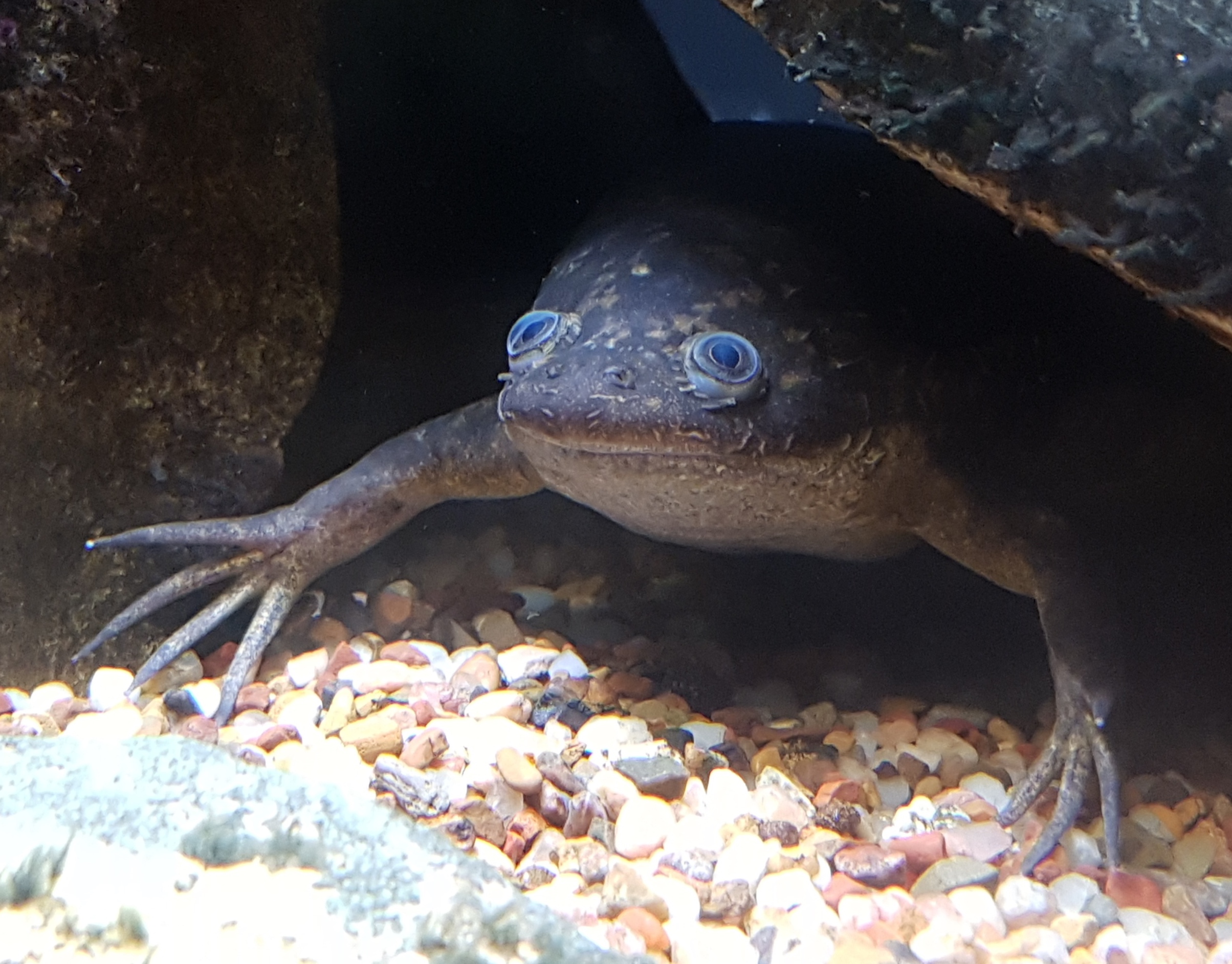
This was a first for our Animal of the Month – we featured our very first amphibian! We were very excited to be tweeting all month @ExoticPetVets about the African clawed frog. But now as November draws to a close, we must dim the spotlight on these interesting amphibians. If you missed any of our tweets, here’s a summary for your reference. Did you know?:
- As the name suggests, the African clawed frog (Xenopus laevis) is native to much of sub-Saharan Africa.
- There are also introduced wild populations of African clawed frogs in parts of North and South America, Europe and Asia.
- African clawed frogs are almost fully aquatic and live at the bottom of freshwater lakes, ponds and streams.
- In the wild, African clawed frogs may move around on land, but only during heavy downpours.
- African clawed frogs are small amphibians that have many different colours and patterns.
- Colours of African clawed frogs include grey, brown, green and albino.
- African clawed frogs can change their colours to help them deal with heat or sunlight or to help them with camouflage.
- African clawed frogs have a specific hormone that can activate colour-changing cells in their skin.
- You can see physical differences between adult female and male African clawed frogs.
- Male African clawed frogs typically grow to a length of 3 – 4 inches (7.5 – 10 cms).
- Adult female African clawed frogs are usually 5 – 6 inches (12 – 15 cms) in length.
- Female African clawed frogs also have heftier bodies than their male counterparts.
- Did you know that male African clawed frogs don’t have vocal cords?
- Even without vocal cords male African clawed frogs have a mating call, which is a series of clicking sounds.
- A female African clawed frog can produce between 100 and 2,000 eggs each time she mates.
- Fertilized African clawed frog eggs will hatch after one week and the hatched tadpoles fend for themselves once they’re born.
- African clawed frogs reach adulthood between six- and eight-weeks of age.
- African clawed frogs shed their skin when they grow or if the skin is old. The shedding process is very fast and it’s unusual to witness it.
- African clawed frogs will make jerking motions with their hind legs which moves them back and forth in the water as they shed their skin. They will then push their shedding skin up over their heads by kicking their hind legs.
- Once their skin is shed, African clawed frogs will eat it by pushing it into their mouths with their front claws. Their skin sheds are nutritious for them.
- African clawed frogs have hind feet that are webbed with claws on three of their toes on each hind foot.
- The African clawed frog is the only amphibian with claws, which they use for shredding food and climbing.
- The African clawed frog’s four front fingers are not webbed and they use them to push food into their mouths.
- African clawed frogs are voracious carnivores and will eat, among other things, fish, worms, snails and insects.
- African clawed frogs in captivity can become tame and may take food directly from a person’s fingers.


I have a couple “mystery snails” that are about the size of a quarter and three African clawed frogs that are about 6 months old. I know the frogs eat pretty much everything but would they harm snails that big? I’d like to put them together but I don’t want to risk the snails getting eaten.